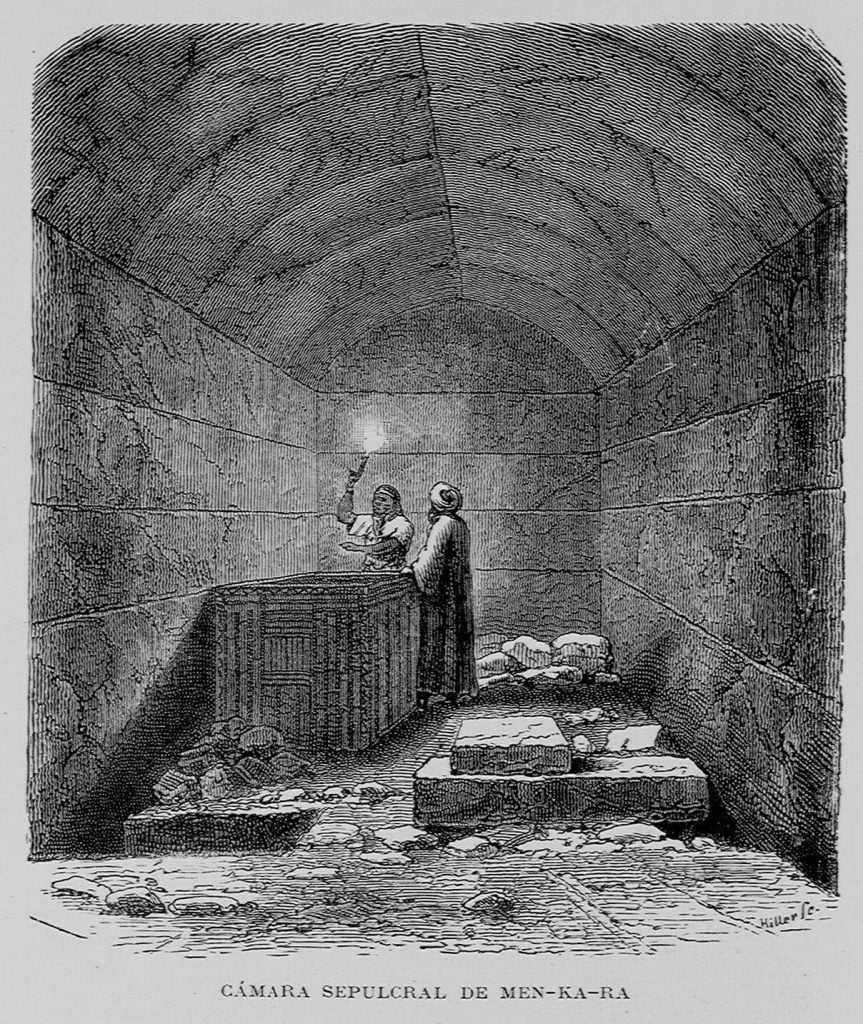Archaeology & History
The Hunt: How an Ancient Sarcophagus Was Lost to the Sea
The smallest of the pyramids at Giza ended up generating a great mystery.

In 1837, an English army officer named Richard William Howard Vyse used gunpowder and dynamite to blast his way inside the pyramid of Menkaure, the smallest of the great pyramids of Giza. Although his destructive methods angered his peers, Vyse did make it inside the structure’s main burial chamber, where he found a large basalt sarcophagus.
The sarcophagus was not inscribed with hieroglyphs, yet Vyse felt hopeful it belonged to the Pharaoh Menkaure himself. The artifact was carried out of the pyramid, loaded onto a schooner called the Beatrice, and sent to the British Museum in London for further study. Unfortunately, the Beatrice never made it to England. Vanishing en route, neither it nor its priceless cargo were ever seen again.
The fate of the Beatrice—and the Menkaure sarcophagus—has fascinated archeologists for centuries, spawning a whole host of theories and hypotheses. Vyse, who did not board the ship himself, provides some clues. In a footnote to his 1840 text The Operations at the Pyramids of Giza in 1837, he mentions that the ship was last seen leaving the port of Livorno in northwestern Italy and is “supposed to have been lost off Carthagena,” a city in southern Spain where “parts of the wreck” had washed ashore.

Illustration from Egypt (1882) by Georg Moritz Ebers. Photo: Wikimedia Commons.
Archaeologist and best-selling author David Gibbins cross-referenced Vyse’s account against mentions of the Beatrice in Lloyd’s Register, one of the oldest and most detailed sources on British merchant vessels from the 19th century. Although he did not discover when or where the ship went missing, Gibbons did learn about its seaworthiness. According to the Register, the Beatrice had recently been copper-sheathed and snow-rigged, making her disappearance all the more confounding.
Lloyd’s Register reports that the Beatrice left Alexandria on September 20, 1838, made a short stopover in Malta on October 13, and was last spotted near Cartagena, corroborating Vyse’s words.
While archeologists are confident that the wreck could eventually be found, they have yet to organize a coordinated search effort. The main obstacle to such efforts isn’t so much money—Egyptian authorities are keen on recovering the looted artifact—as bureaucracy, as they require the approval and cooperation of the Spanish government.
The Hunt explores art and ancient relics that are—alas!—lost to time. From the Ark of the Covenant to Cleopatra’s tomb, these legendary treasures have long captured the imaginations of historians and archaeologists, even if they remain buried under layers of sand, stone, and history.





